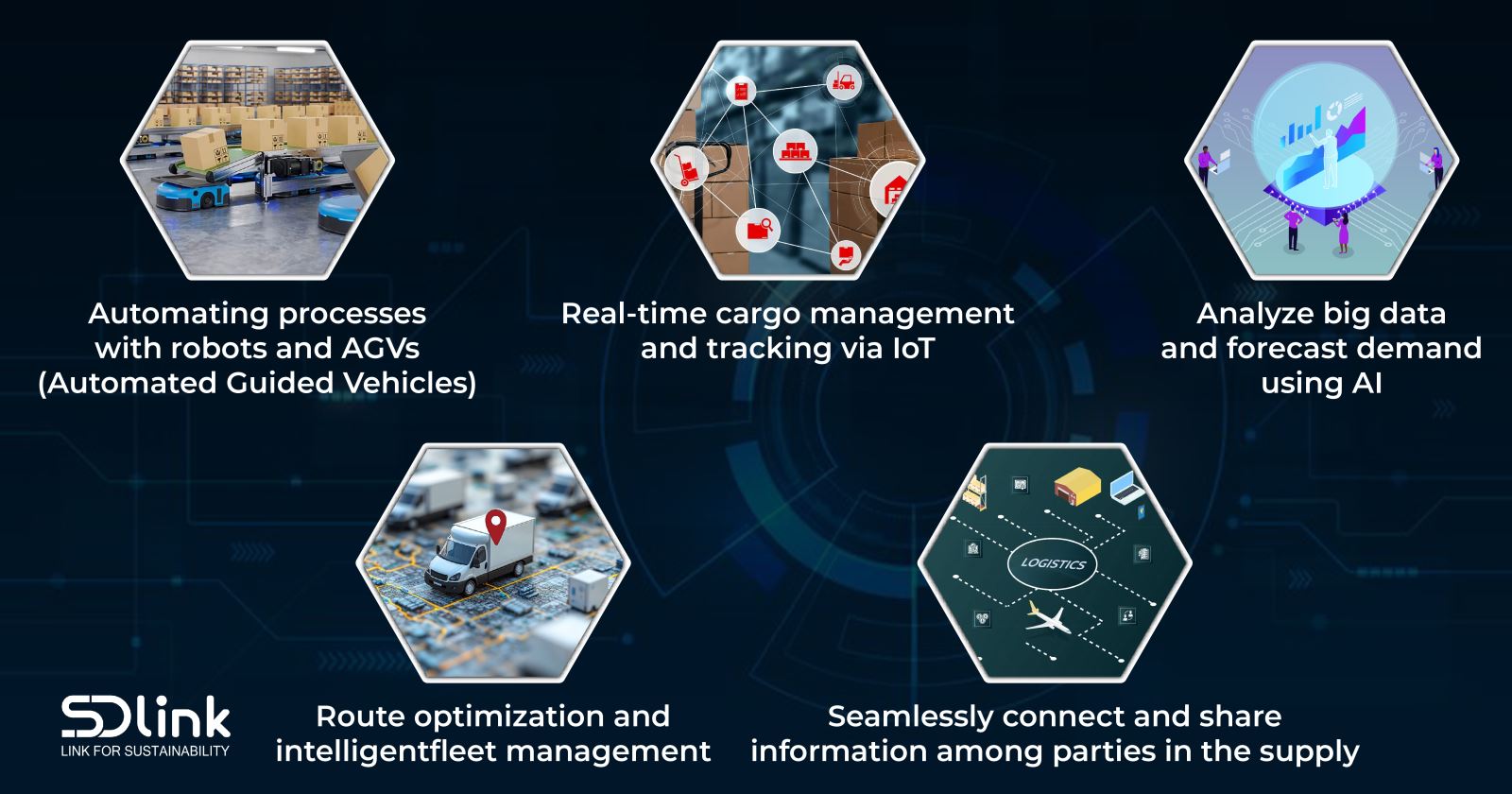By Sandy Tran
Smart Logistics represents the next evolution in supply chain management, integrating digital technology, artificial intelligence (AI), Internet of Things (IoT), and automation to create a more efficient and responsive supply chain ecosystem. This modern approach allows businesses to monitor shipments in real-time, automate operations, and leverage data for strategic decision-making.
The core elements that define smart logistics include automated warehousing with AGVs (Automated Guided Vehicles), IoT-enabled real-time tracking systems, AI-powered demand forecasting, intelligent route optimization, and seamless data sharing across the supply chain network.
In the context of strong global digital transformation, Vietnam's smart logistics industry is witnessing remarkable development with the integration of modern technology and smart solutions. According to the latest analysis from the Vietnam Logistics Business Association (VLA), Vietnam's logistics market reached $57 billion in 2023 and $65 billion in 2024 (preliminary), with an expected growth rate of 15-20% for 2025.
The government has facilitated the smart logistics industry through a synchronized legal framework. Notable is Decision 221/QD-TTg dated February 22, 2021, amending Decision 200/QD-TTg approving the Project on improving competitiveness and developing Vietnam's logistics services until 2025, targeting to increase the logistics sector's contribution to 9-11% of GDP. Additionally, Decree 47/2021/ND-CP detailing certain articles of the Investment Law 2020 creates a legal corridor for investment incentives in logistics, especially high-tech projects. Logistics enterprises also receive incentives under Decree 82/2018/ND-CP on industrial park and economic zone management when investing in logistics infrastructure in industrial parks. Notably, with Decision 942/QD-TTg approving the Strategy for E-government Development towards Digital Government 2021-2025, with vision to 2030, the government has created a foundation for digital transformation in logistics. Logistics businesses are encouraged to invest in digital technology through tax incentives under Decree 31/2021/ND-CP detailing and guiding the implementation of the Investment Law. With favorable legal foundations, the digital transformation wave in Vietnam's logistics has created fundamental changes in supply chain operations. Vietnamese logistics enterprises invested about $500 million in digital technology in 2023, though modest compared to the Southeast Asian average, showing a 25% increase from 2022 (According to the Digital Transformation Report by the Ministry of Information and Communications).
According to KPMG's survey of Vietnam's logistics market in late 2023, widely applied technologies include Warehouse Management Systems (WMS), warehouse automation robots (AGVs), and AI applications in route optimization. Notably, AI implementation has helped businesses reduce operational costs by 20-35%. According to the Ministry of Industry and Trade, logistics enterprises are focusing investment in three main areas: first, smart warehouse management systems, with notable projects like the $200 million 4.0 automated logistics center in Bac Ninh; second, blockchain application in traceability, with 15 major projects being implemented at seaports; third, smart transport connection platforms, attracting about $500 million in investment in 2024.
The 'Vietnam Logistics Market Outlook 2023-2030' report by World Bank published in September 2023 forecasts substantial investment needs for smart logistics in Vietnam during 2025-2030. The smart logistics infrastructure alone requires about $5 billion, including $2 billion for automated logistics centers, $800 million for smart cold storage systems, and $1.5 billion for smart port development. Meanwhile, according to KPMG, the logistics technology solutions market is forecast to grow strongly at 25-30% annually during 2025-2030, with demand for $800 million in supply chain management software and $1.5 billion for last-mile delivery solutions.
Despite its potential, Vietnam's smart logistics industry still faces significant challenges such as high logistics costs and skilled workforce shortages. According to the Ministry of Industry and Trade, Vietnam's logistics costs currently account for 16.8% of GDP, much higher than the 9.5% average of developed countries. The main reasons stem from limited technology application and lack of synchronization between transport modes. The VLA report also highlights human resource challenges, with the industry expected to face a shortage of 2 million digitally skilled workers by 2030. To address this issue, businesses are strengthening cooperation with educational institutions while investing in internal training programs on logistics technology.
However, if Vietnamese enterprises maintain a positive mindset, prepare optimal conditions for digital infrastructure and human resources, and maintain a broad vision, the Vietnamese smart logistics industry in 2025 and beyond is likely to achieve favorable results. The market size could reach $80-90 billion by 2025, with approximately 70% of logistics enterprises applying digital technology.
At the macro level, with efforts to improve logistics performance, Vietnam aims to advance into the top 30 countries in the global Logistics Performance Index by 2025. This will significantly contribute to enhancing the competitiveness of Vietnam's economy in the digital era.
References:
- Vietnam Logistics Market Report 2023 (VLA, published December 2023)
- Vietnam Logistics Market Outlook 2023-2030 (World Bank, September 2023)
- Vietnam Logistics Investment Report (KPMG, Q4/2023)
- Vietnam Logistics Report 2023 (Ministry of Industry and Trade, December 2023)
- Digital Transformation in Logistics Report (Ministry of Information and Communications, Q4/2023)
